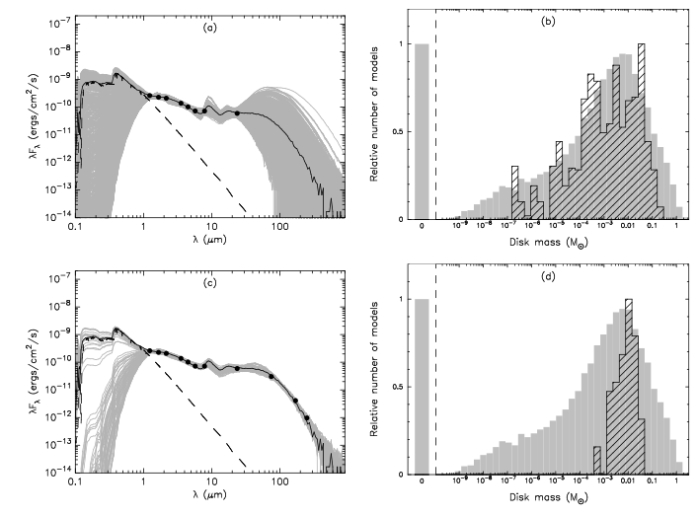| EPoS Contribution |
|
SED Modeling of Young Stellar Objects in the era of Herschel
Thomas P. Robitaille Harvard-Smithsonian Center for Astrophysics, | |
| In the last few years, a wealth of data on star-forming regions has been produced by the Spitzer Space Telescope. Tens of thousands of young stellar objects have been detected in large Spitzer surveys, both in the Galactic mid-plane (GLIMPSE and MIPSGAL), and in nearby star formation regions (c2d, Gould Belt, or Orion surveys). Spectral energy distributions (SEDs) have been constructed from these data, in combination with ground-based optical and near-infrared observations, and model SEDs have been an integral part of their analysis. With the advent of the Herschel Space Observatory, photometry in the far-infrared and sub-milimeter -- which previously existed only for a small fraction of sources -- will be available for thousands of YSOs. Modeling these SEDs will provide unprecedented insight into the early stages of star formation, using statistically meaningful samples of YSOs of all ages and masses. In this contribution, I will describe a new grid of millions of model SEDs that we are computing and that will be made available to the community. These new models will be perfectly suited to modeling Herschel data in combination with the existing optical, near-, and mid-infrared data, and will also help the interpretation of spatially resolved multi-wavelength observations, including mid-infrared interferometric data, and eventually ALMA observations. | |
 | |
| Caption: SED modeling of simulated data for a Young Stellar Object, demonstrating the importance of Herschel PACS and SPIRE data in constraining evolutionary parameters (in this case the disk mass). The models used are from Robitaille et al. (2006). The hatched histograms in the right panels show the range of disk masses that provide a good fit to the photometry in the left panels. Prior to Herschel, tens of thousands of Spitzer-detected YSOs only had SEDs defined up to 24 microns (as shown in the top left panel) but Herschel will now provide measurements of sub-mm fluxes or upper limits which will strongly constrain the modeling for many of these sources. | |
| Collaborators: B.A. Whitney, SSI, USA |
Suggested Session: Early Phases of Disks, Herschel |

